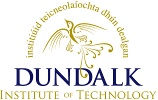Rabab, Kaneez e (2022) Mechanism of action of GoSlo-SR-5-6 on Kv7.4 channels. Doctoral thesis, Dundalk Institute of Technology.
|
PDF
- Submitted Version
Download (20MB) |
Abstract
Mechanism of action of GoSlo-SR-5-6 on Kv7.4 channels Voltage-gated K+ channels (Kv7) play important roles in a range of physiological functions such as sensory transduction, smooth muscle contraction, epithelial secretion and neuronal excitability (Soldovieri et al., 2011). In the airway smooth muscle cells (ASMC), Kv7.4 and Kv7.5 are predominantly expressed and play an important role in the regulation of airway diameter and activators of Kv7 channels have been shown to induce relaxation of ASMC (Brueggemann et al., 2018). In the lab previously, a family of compounds called the GoSlo-SR were developed (Roy et al., 2012; Roy et al., 2014). Among these, GoSlo-SR-5-6 (SR-5-6), was established as a potent and efficacious activator of Kv7.1, Kv7.4 and Kv7.5 channels and was less effective on Kv7.2 and Kv7.3. In Kv7.4 channels, SR-5-6 increased the G/Gmax to ~1.6 and shifted the V1/2 by ~-50 mV (Zavaritskaya et al., 2020). Phosphatidylinositol-(4,5)-bisphosphate (PIP2) is a small membrane lipid known to be critical for Kv7 channel function (Gamper & Shapiro, 2007). PIP2 is known to increase Gmax, slow deactivation and negatively shift the V1/2 and therefore has very similar effects to SR-5-6 on Kv7.4 channels. Given that PIP2 could mimic the effects of SR-5-6, potential PIP2 binding residues were mutated and the effect of each mutant was examined in the absence and presence of SR-5-6. Consequently, in this thesis, the data presented is aimed at: 1) Identifying potential residues in Kv7.4, important for the effect of SR-5-6 and assessing the state-dependent effect of SR-5-6 on Kv7.4 channels. 2) Assessing the effect of SR-5-6 on drug-sensitive Kv7.4 channels domain swapped with drug insensitive Kv7.3. 3) Examining the role of PIP2 modulation and PIP2 binding residues on SR- 5-6 mediated activation of Kv7.4 channels. The first results chapter investigated the role of drug binding residues of known activators, to look for potential binding sites for SR-5-6 in Kv7.4 channels. Although the effect of SR-5-6 was not abolished in any of the mutants studied in this chapter, a mutant (L249A) was found, which practically abolished the negative shift in activation V1/2 of Kv7.4 channels. Although this mutant abolished 9 the effect of SR-5-6 on DV1/2, it failed to reduce its effect on G/Gmax. In the later part of this chapter, the state-dependent activity of SR-5-6 on Kv7.4 channels was investigated. The findings suggested that the effects of this drug appeared to be greater than WT Kv7.4 when the VSDs were locked in the resting state (E136R). Also, with the partially activated state mutant (E136R/R207E), the channels were open at exceptionally negative potentials, but SR-5-6 could still enhance G/Gmax. Overall, the results suggested that the effects of SR-5-6 were not state- dependent. In the subsequent chapter, a chimeric approach was utilized between Kv7.3 and Kv7.4 channels and examined the effects of swapping each main domain of the Kv7.3 channel onto a Kv7.4 background. The rationale was based on the earlier demonstration by Dudem (2019) that Kv7.3 channels were substantially less sensitive to 10 μM SR-5-6 (DV1/2 ~-16 mV; G/Gmax ~1) than Kv7.4 channels. However, when the S3-S4 linker, S4 domain, the S4-S5 linker, S5 domain, S6 domain, C-terminus, voltage-sensing domain (S1-S4), pore domain (S5-PL-S6) were swapped and mutated non-conserved residues between Kv7.3 and Kv7.4, none of these swap constructs or mutant channels mitigated the effects of SR-5- 6. These data indicated that this approach was not effective at identifying a binding site for SR-5-6 in this channel. The final results chapter examined whether interfering with PIP2 altered the effects of SR-5-6. When PIP2 was depleted using the voltage-sensitive phosphatase CiVSP, a clear reduction was observed in the effectiveness of SR- 5-6 to shift DV1/2 and the change in G/Gmax was significantly reduced. Similarly, when wortmannin was used to inhibit the replenishment of membrane PIP2, it abolished the effect of SR-5-6 on G/Gmax. These results demonstrated that PIP2 may play an important role in mediating the effects of SR-5-6, particularly on G/Gmax. Given the results of the above experiments, it was therefore surprising that the effects of SR-5-6 were not blocked when a number of PIP2 binding mutant channels were studied. Furthermore, a number of these mutations in Kv7.4 channels did not result in loss-of-current mutations as reported in other Kv7 channels, which was surprising. This suggested that Kv7.4 may either have different PIP2 binding residues or alternatively, more than one mutation was needed to reduce the binding PIP2 in Kv7.4 channels.
| Item Type: | Thesis (Doctoral) |
|---|---|
| Subjects: | Science > Biology |
| Research Centres: | UNSPECIFIED |
| Depositing User: | Mark Hollywood |
| Date Deposited: | 01 Sep 2022 08:59 |
| Last Modified: | 01 Sep 2022 08:59 |
| License: | Creative Commons: Attribution-Noncommercial-Share Alike 4.0 |
| URI: | https://eprints.dkit.ie/id/eprint/787 |
Actions (login required)
 |
View Item |
Downloads
Downloads per month over past year

